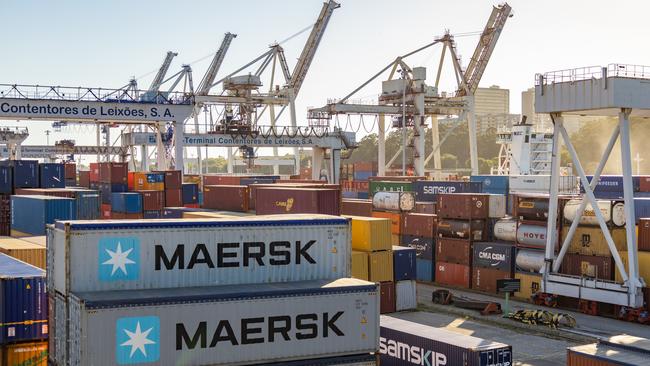How your company’s social purpose can also drive profit
Research shows advocacy-based business models can help drive top- and bottom-line growth. These two global companies offer shining examples.

Purpose-driven strategies focus on relationships with multiple stakeholders and seek to solve higher-order problems for society. To be successful, these strategies also have to achieve top- and bottom-line growth. The question is: How can companies achieve both of these goals?
To find out, we conducted an in-depth study of purpose implementation at 12 companies that were reorienting themselves to create multi-stakeholder impact while seeking high financial growth. Although each company used various industry-specific strategies, a common theme emerged. The companies that successfully achieved the dual goals of purpose and profit did so by adopting an advocacy-based business model.
The advocacy model focuses on targeted stakeholders. A company leverages its products, services and capabilities to address key socio-economic or environmental issues challenging these stakeholders — in alignment with its purpose. When the company can demonstrate tangible progress, these stakeholders are converted into advocates of the firm which, in turn, drives positive business outcomes.
Our research shows that an advocacy-based business model is underpinned by four key elements.
Taking a stance
To adopt an advocacy-based business model, companies have to take a stance, typically on societal or environmental problems. Consider A.P. Moller–Maersk, the company that pioneered container shipping and has enabled global trade. In 2021, the company’s leaders stepped forward to acknowledge Maersk’s contribution to the climate crisis: greenhouse-gas emissions that amounted to approximately 1 per cent of the 3.5 billion tons produced annually by the global transport and logistics industry. Taking an industry-first stance, the company announced that – in line with its purpose of “improving life for all by integrating the world” – it would decarbonise its shipping as a strategic and moral imperative.
To that end, Maersk decided to gradually renew its entire fleet to eventually operate solely on green fuels. It began by ordering 19 new container ships, even though it wasn’t clear whether there would be enough green fuels to power them. This sent a signal to the ecosystem, and fuel suppliers came forward to develop strategic partnerships for the incoming fleet.
Royal Canin, a specialist in science-based health nutrition for cats and dogs, is another company that has created value by taking a stance that aligns with its purpose. Royal Canin (part of Mars, Inc., and the company’s largest single brand) operates what it refers to as a mutual value-creation model with pet professionals – veterinarians, shelters and breeders. For each stakeholder, the company offers active programs focused on their pet-related pain points while taking a stance to address the higher-order challenges of the industry.
This advocacy model turned out to be more effective than traditional marketing in helping Royal Canin develop lifelong trusted relations with pet owners. “An advocacy model is an incredibly powerful long-term financial model,” Cécile Coutens, Royal Canin’s global president, told us. “There is no better approach to having real impact than building trusted partnerships – and it is part of the DNA of Mars.”
Extrapolation
Neither Maersk nor Royal Canin built completely new processes to support their purpose. Instead, they extrapolated from what was already in place.
Maersk did this by moving up the timing of its goal for achieving net-zero greenhouse-gas emissions. In 2018 the company had announced a target date of 2050 for a carbon-neutral fleet, but in 2021 it changed the date to 2040. Vincent Clerc, the company’s CEO, told us, “A 2050 target meant that there would be three or four CEOs before somebody had to deliver. By advancing the target, we ensure that every investment being made today is with the mindset of contributing toward our new goals.”
At Royal Canin, leaders achieved a similar alignment on an advocacy-driven approach by building on the premise that knowledge creates recommendations. This required the company to reshape its underlying investment model. Instead of chasing a wide range of opportunities, they allocated resources to specific health areas such as start of life, obesity and healthy ageing. This strategy informed investments in R&D – and has resulted in new niche products that anticipate health issues and are sold through vets and specialty retailers.
Strong leaders who accept vulnerability
For most companies and their leaders, driving an advocacy-based business model is a pioneering move. Despite their bold efforts to create higher-order impact, we find that they are still willing to acknowledge the risks that stem from not knowing the answers to questions raised by the new model.
For example, when Maersk announced its capital-expenditure investments, it was not clear whether it could make a green transition profitable or whether green methanol, which it had backed, would be the fuel of the future. Adopting an advocacy-based model has created vulnerabilities for Maersk, but the company’s leaders have taken them in stride as they try to stay ahead of the curve.
Traditional logic would suggest steering clear of unproven niche markets. But Royal Canin seeks them out. As Loic Moutalt, the global president of Mars Petcare, told us, “Royal Canin has been the antithesis of scale. We don’t focus where the value of the market is. We operate where everybody else doesn’t dare to go.”
An enabling culture
On an electric circuit board, the light doesn’t come on until the last wire is connected. Similarly, in advocacy, companies can only create higher-order value for multiple stakeholders when all elements connect.
Throughout its history, Maersk has built a legacy of trust by connecting suppliers and customers. The next frontier for the company is fighting climate change by decarbonising shipping. Maersk feels its responsibility is not just to solve the problem but also to figure out how it will be solved.
Royal Canin, too, has developed a culture that is founded on absolute clarity about the company’s purpose and vision. “Cat and dog first,” Cécile Coutens told us. “It motivates and shapes everything we do. People who work here have a belief that we are collectively having true impact, and this is our source of pride and passion.” That enabling culture – focused on the long-term impacts that the company can have in everything it does on pets and their lives – has been a key to Royal Canin’s success.
An advocacy-based model helps companies think in a consistent, long-term way about what’s really at stake for them and their stakeholders. When companies do the right thing, the key stakeholders in their value chain recognise this, which enhances overall trust and commitment. Especially during tough times, this improves business resilience and allows companies over the short- and long-term to achieve two mutually reinforcing goals: significant impact that’s in line with their purpose, and sustainable financial growth.
Thomas W. Malnight is an emeritus professor of strategy and general management at IMD, in Lausanne, Switzerland. Ivy Buche is an associate director of the Business Transformation Initiative at IMD, in Lausanne, Switzerland. Copyright 2023 Harvard Business review/Distributed by NYTimes.






